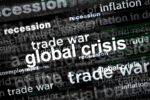A crisis can be challenging enough for companies and organizations to manage without having deal … More
A crisis can be challenging enough for executives to manage without having to deal with the additional burden of responding to other unfolding emergencies. One such scenario would be the need to respond to the impact of President Donald Tump’s tariffs, a crippling cyberattack,and the damage inflicted by a nature-related disaster— at the same time.
Knowing what to do and how to do it when multiple crises strike are now critical skills for business leaders. “Cascading crises are becoming increasingly common. There are so many examples right now,” Cheryl Conner, a crisis communications expert and CEO of SnappConner PR, told me in an email interview. Elon Musk and his companies, for example, have been in the headlines because of the blowback against his role in reducing the federal budget and workforce, the vandalism of Tesla cars, boycotts against the car company, and the recent explosions of several SpaceX Starships.
Navigating Four Different Crises
Entrepreneurs, for whom managing risk is a necessary survival skill, often have their own stories to tell about surviving simultaneous crisis situations. Steve Taplin, CEO of Sonatafy Technology, told me in an email message that “I’ve had front-row seats to more crises than I can count” at the software development firm.
He noted that at one point he had to navigate four major crisis situations at the same time. They included a key client who suddenly terminated a longterm relationship with the company; another who suddenly eliminated its entire engineering team; and a third client who decided to move its business to ultra-low-cost offshore vendors. “Meanwhile, I had to manage the rising urgency—and sometimes chaos—around AI transformation from both clients and competitors,’ he recalled.
Taplin said he managed to navigate the four crises by prioritizing them based on their impact on the firm’s revenue, being honest in communications about the situations, and doubling down “on what we did best [by introducing]
AI roadmapping and free code audits to retain and re-engage prospects.”
Don’t Forget The Human Factor
Crisis management plans are critical when preparing for and managing corporate emergencies, but so is the human factor. “You don’t survive multiple crises by being the smartest in the room. You survive by being the most human, the most accountable, and the most ready,” Patrice Williams-Lindo, CEO of Career Nomad and a workforce futurist, observed in an email message to me.
“When you’re hit with multiple crises at once, you don’t just need a plan—you need nerve, narrative, and a leadership spine. And if you don’t have all three, the public will find out fast. The problem with this is that then the temptation is to be more reactive than proactive which can be problematic in times of crisis,” she advised.
For companies faced with the chaos of dealing with more than one crisis at a time, Williams-Linda said “Don’t wait for the headlines—be the headline. Get ahead of these conversations and take your employees along the journey with you. Don’t delegate the voice of the brand in a storm. People want to hear from you, not just your legal team. In terms of crisis, people are looking for human connection and someone [who]
can be accountable in a human way.”
Do The Groundwork Now
An effective strategy for companies when preparing to deal with the impact of simultaneous crisis situations is to adhere to best crisis management practices today. “They communicate clearly when the stakes are low, follow through on promises, and build trust long before it’s tested,” Kate Tillotson, founder and principal of The Beacon Group, told me in an email interview.
This kind of fundamental groundwork can return big dividends when the chips are down for companies. “When the unexpected happens—and it always does—these companies aren’t starting from scratch. That reservoir of goodwill, built slowly over time, becomes a stabilizing force in moments of chaos. It doesn’t eliminate the crisis, but it does earn leaders the benefit of the doubt, even when the answers aren’t perfect,” she concluded.
From cyberattacks and natural disasters to supply chains disruptions and trade wars, there are a growing number of crisis triggers that could create a perfect storm for companies. That’s why the longer they wait to prepare for simultaneous multiple crisis situations—or fail to imagine what could go wrong—the worse things will be if they turn into nightmare realities.










